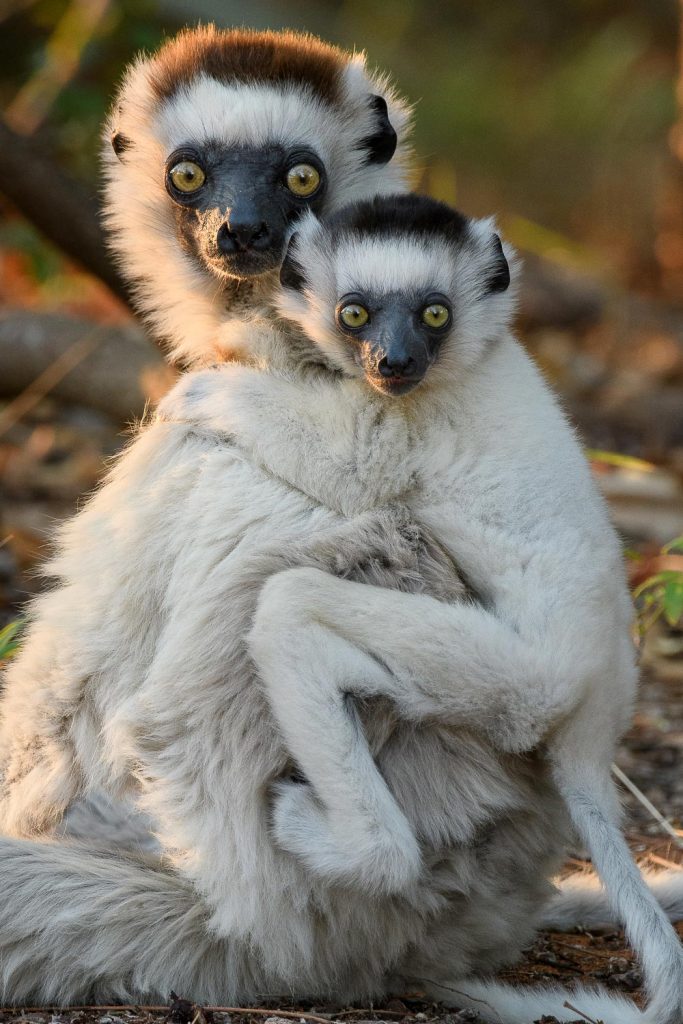
The critically endangered Verreaux’s Sifaka (Propithecus verreauxi) is one of the 109 species of lemurs that currently are extant on Madagascar. A total of 17 species of lemurs have already gone extinct. Credit: Chien C. Lee
According to a new study, it would take an astounding 3 million years for the number of species that have been lost due to human activity on Madagascar to be restored. Furthermore, the study found that if currently threatened species were to become extinct, it would take more than 20 million years for the island to recover, which is significantly longer than has been found on any other island.
Madagascar is a globally recognized biodiversity hotspot, renowned for its abundance of unique species, from baobab trees to lemurs. The island is quite extraordinary in that approximately 90% of its species of plants and animals are found nowhere else. After humans arrived on the island 2500 years ago, it has experienced a multitude of extinctions, including the loss of giant lemurs, elephant birds, and dwarf hippos.
Unlike many other islands, the fauna of Madagascar has been relatively well-preserved. Over two hundred species of mammals still survive on the island, including unique species such as the fossa and the ring-tailed lemur. Unfortunately, more than half of these species are now at risk of extinction, largely due to human impact. The question remains, to what extent have humans disrupted the natural state of Madagascar, and what are the potential consequences if the current trend of environmental change continues?
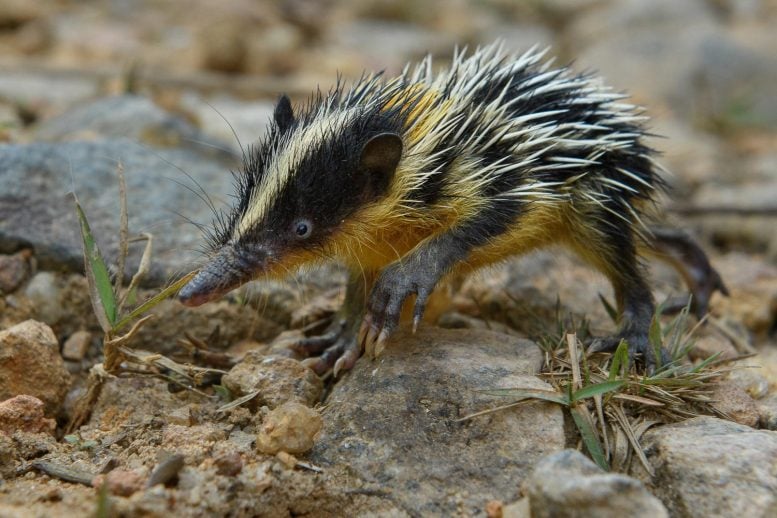
Lowland Streaked Tenrec (Hemicentetes semispinosus). This is a species of tenrec, a diverse and unique group of mammals found only on Madagascar. Credit: Chien C. Lee
Malagasy mammals
A team of biologists and paleontologists from Europe, Madagascar, and the United States set out to answer these questions by building an unprecedented new dataset describing the evolutionary relationships of all species of mammals that were present in Madagascar at the time that humans colonized the island. The dataset includes species that have already gone extinct and are only known from fossils, as well as all living species of Malagasy mammals. The researchers identified 249 species in total, 30 of which already are extinct. Over 120 of the 219 species of mammals that remain on the island today are currently classified as threatened with extinction by the IUCN Red List, due to habitat destruction, climate change, and hunting.
Using a computer simulation model based on island biogeography theory, the team, led by biologists from the University of Groningen (Netherlands), Naturalis Biodiversity Center (Netherlands), and the Association Vahatra (Madagascar) found that it would take approximately 3 million years to regain the number of mammal species that were lost from Madagascar in the time since humans arrived. However, if currently threatened species go extinct, it would take much longer: about 23 million years of evolution would be needed to recover the same number of species. Just in the last decade, this figure has increased by several million years, as human impact on the island grows.
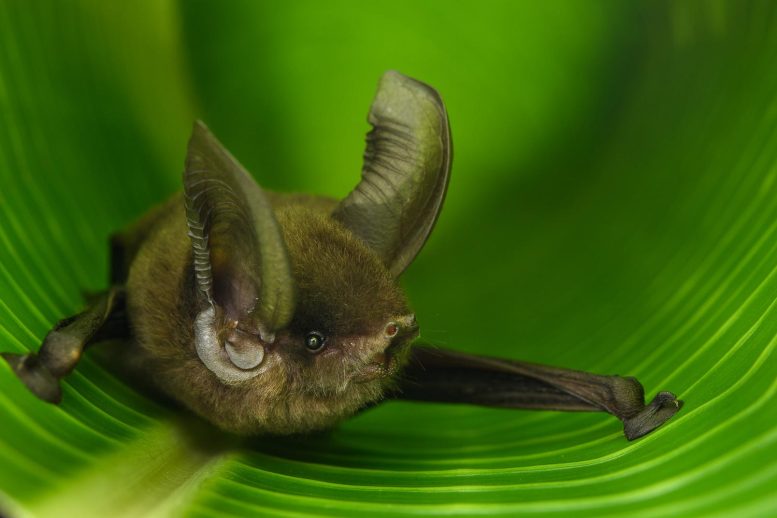
The Madagascar Sucker-footed Bat (Myzopoda aurita) belongs to an ancient family of bats that is found only on Madagascar. Credit: Chien C. Lee
Extinction wave imminent
The staggering time it would take to recover this diversity surprised the scientists: ”It is much longer than what previous studies have found on other islands, such as New Zealand or the Caribbean,” leading researcher Luis Valente says The results of this new research, published in the scientific journal Nature Communications, suggest that an extinction wave with deep evolutionary impact is imminent on Madagascar unless immediate conservation actions are taken. However, the study finds that with adequate conservation action we may still preserve over 20 million years of unique evolutionary history on the island. Valente: “It was already known that Madagascar was a hotspot of biodiversity, but this new research puts into context just how valuable this diversity is. These findings underline the potential gains of the conservation of nature on Madagascar from a novel evolutionary perspective.”
Reference: “The macroevolutionary impact of recent and imminent mammal extinctions on Madagascar” by Nathan M. Michielsen, Steven M. Goodman, Voahangy Soarimalala, Alexandra A.E. van der Geer, Liliana M. Dávalos, Grace I. Saville, Nathan Upham and Luis Valente, 10 January 2023, Nature Communications.
DOI: 10.1038/s41467-022-35215-3

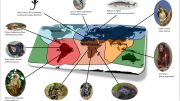
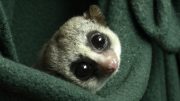


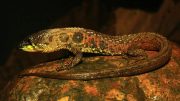


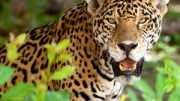
It is a shame for sure, but you have no right to complain. You ruined your own countries and now want to dictate to others. Lessons learned and all of that. Go to Madagascar without your wallet and phone. Now pick up some parasites.. No food in the cities. Better go kill something or your kids will starve. Try to keep things in perspective. For humans, its the here and now. Food, shelter and security. These are realities you never mention in their true light. 1 million years from now the earth will give 0 f*@ks for humans and what the f*@k ever happened to them. just sayin’…..
“… threatened with extinction …, due to habitat destruction, climate change, and hunting.”
Climate change is almost a non sequitur because the terrestrial, average global temperature has only increased about 0.5 deg C in the last 50 years. Most of that has been at night and in the Winter, with the Arctic showing the fastest rate of warming. The change in Madagascar is probably unmeasurable. Certainly the local inhabitants have had little impact.
However, the land use changes and hunting impact can be seen as a proxy for an expanding population, after the Western World introduced modern medicine and technology. As the population expands, there is greater need for water and agricultural land, and protein from ‘bush meat.’ What do the authors propose? Conservation? Is that a euphemism for more national parks, reducing the ability of the indigenous people to expand agriculture and hunting grounds? If so, that means confining more people to cities, with no increase in the ability to feed people. In other words, changing the culture and a decreased quality of life.
It is unfortunate that flora and fauna are at risk. However, promoting ‘solutions’ that negatively impact the human population says a lot about the priorities of the ‘saviors’ from wealthy, industrialized countries.
Wasn’t Madagascar at COP 15 Biodiversity Conference? Surely they are following the plan: https://www.genolve.com/design/socialmedia/memes/Results-of-UN-Biodiversity-Conference-(COP-15)